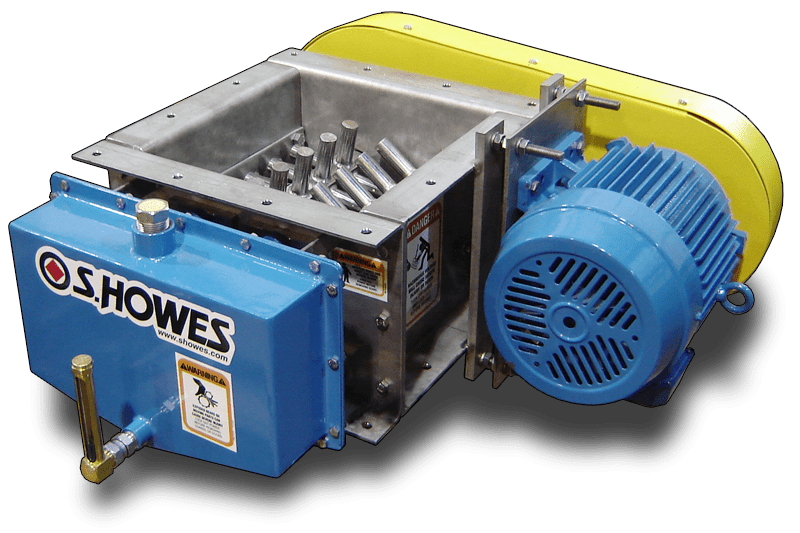
Posted on January 16th, 2024 by showes
Lump breakers and hammermills are heavy-duty machines used in the bulk solids industry. They help reduce the material size and enhance its flowability for further processing.
Hammermills have been used for centuries to break and crush hard materials in chemical, construction, mining, and mineral industries.
However, lump breakers are a recent invention designed to reduce delicate or grainy blocks of materials into smaller sizes for further processing. They work best for fly ash, food products, chemicals, fertilizers, and filter cakes.
Although both machines have the same function of reducing material size, each is designed to meet specific operational and material requirements. Knowing how they work and what applications they are suited for will help you choose the best one for efficient and cost-effective operations.
How Lump Breakers Work
Lump breakers (also called lump crushers or granulators) process materials agglomerated due to weak bonds during transportation or storage. These machines contain specially shaped blades within their housing to crush these agglomerated lumps.
The de-lumping process starts when the material enters the opening at the top of the unit. The blades rotate through stationary, fixed combs and use a combination of impact and compression forces to crush the material. The process ends when the material size reaches the required dimension and gets discharged through a screen.
The resulting particle size depends on the blade size, rotation speed, and the space between the combs and blades. By reducing the material to particles of uniform consistency and size, lump breakers enable easier handling and processing, which results in better product quality.
How Hammermills Work
Compared to lump breakers, hammermills use greater force to break, crush, and grind harder and more brittle materials into smaller particles. In hammermills, hammers of various sizes and configurations are attached to a rotating shaft.
Hammermills work by slamming hammers onto the materials, pounding them against the chamber walls repeatedly. The continuous hammering grinds the material into particles small enough to pass through a screen having openings of the desired size and shape.
The size of the final product depends on several factors: hammer speed and size, the number and arrangement of hammers, and the screen size.
How Lump Breakers and Hammermills Are Different
While both the lump breakers and hammermills have similar functions, they have several key differences:
Kind of Material
Lump breakers efficiently process relatively soft, lumpy material and de-lump it into a flowable state. On the other hand, hammermills are suitable for reducing more concrete material into particles of uniform size.
Operation
Lump breakers apply lower impact force and have larger operating clearances. They gently crush the material agglomerated into lumps due to humid conditions during storage or transit.
Alternatively, hammermills employ higher impact force and smaller spaces to break down the individual pieces of materials with sheer power into significantly smaller sizes.
Applications
Lump breakers are especially useful for materials used in heavy-duty industries, such as fly ash, fertilizers, and powdered chemicals. They also work well for moisture-laden materials, including sugar, salt, and food bars.
In contrast, hammermills are suitable for more brittle materials like wood, glass, pellets, paper, ceramics, and cereals.
How to Choose Between the Two
Whether to choose a lump breaker or a hammermill for your specific application depends on several factors:
- Material size, hardness, and moisture content.
- The desired size of the end product
- The force required to break the material
- Requirements for conveying and further processing
At S. Howes, we offer the best lump breakers in the industry customized according to your specific application.
S. Howes’ lump breakers feature several options, such as in-line or stand-alone units, mild or stainless steel construction material, different power transmissions, twin shaft design, abrasion-resistant round pins to reduce product damage, and flanged inlets and outlets.
Contact us today to request a quote or learn more about our heavy-duty lump breakers.





